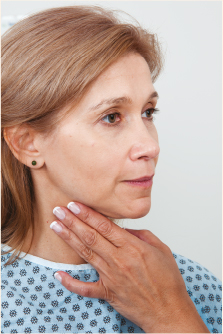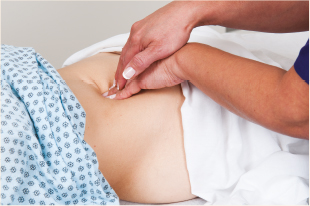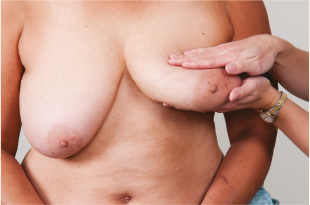Types of Palpation
| Type | Purpose | Technique |
|---|---|---|
| Light palpation | To determine surface variations such as pulses, tenderness, surface skin texture, temperature, and moisture | Place your dominant hand lightly on the surface of the structure. There should be very little or no depression (<1 cm). Feel the surface structure using a circular motion. |
| Moderate palpation | To feel for easily palpable body organs and masses | Depress the skin surface 1-2 cm (0.5-0.75 in.) with your dominant hand, using a circular motion. Note size, consistency, and mobility of structures. |
| Deep palpation | To feel very deep organs or structures that are covered by thick muscle | Place your dominant hand on the skin surface and your nondominant hand on top of your dominant hand to apply pressure. This should result in a surface depression between 2.5 and 5 cm (1 and 2 in.). |
| Bimanual palpation (use with caution as it may provoke internal injury) | To palpate breasts and deep abdominal organs | Use two hands, placing one on each side of the body part (e.g., uterus, breasts, and spleen) being palpated. Use one hand to apply pressure and the other hand to feel the structure. Note the size, shape, consistency, and mobility of the structures you palpate. |


